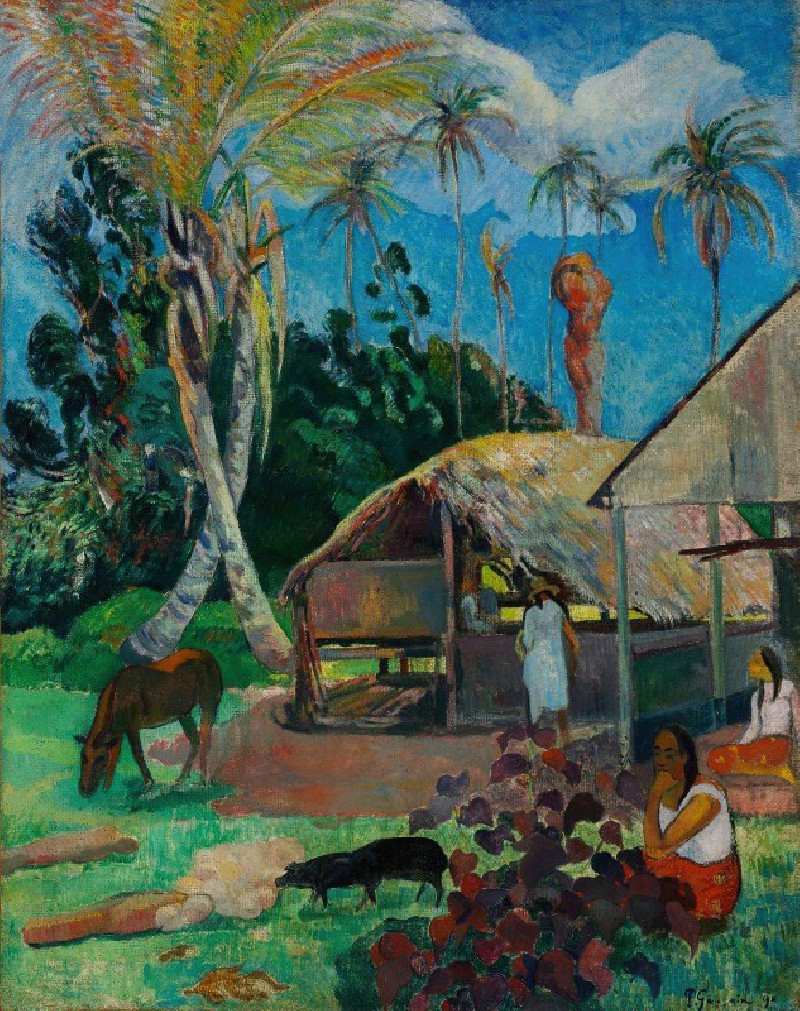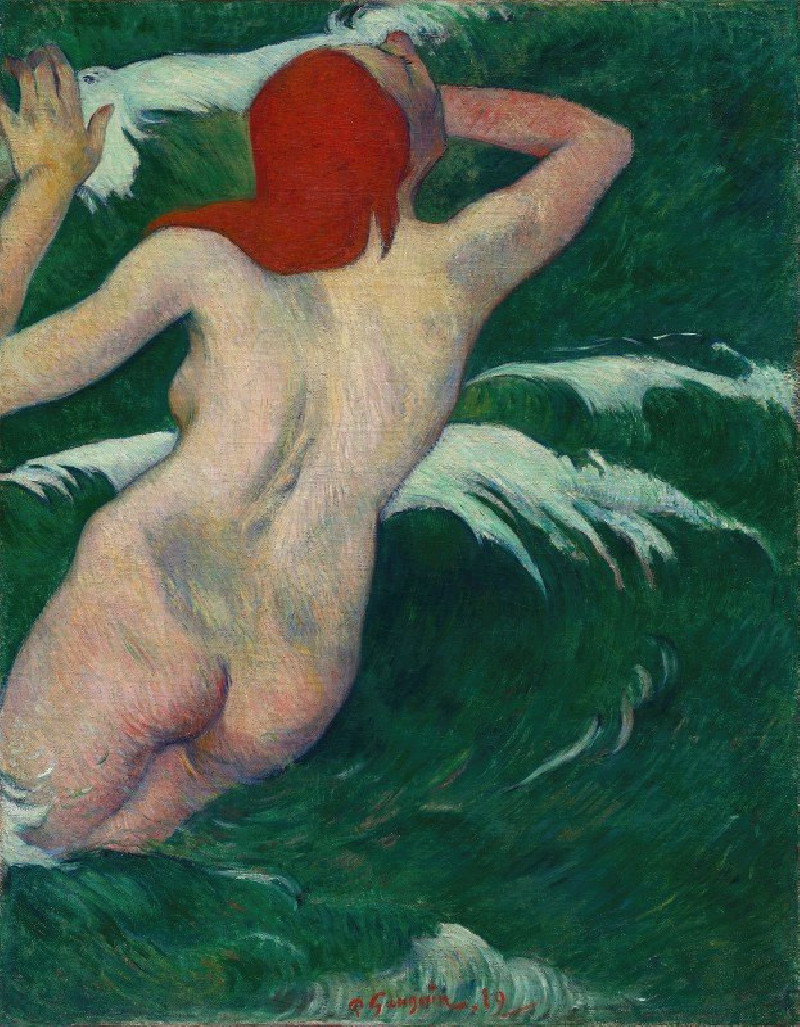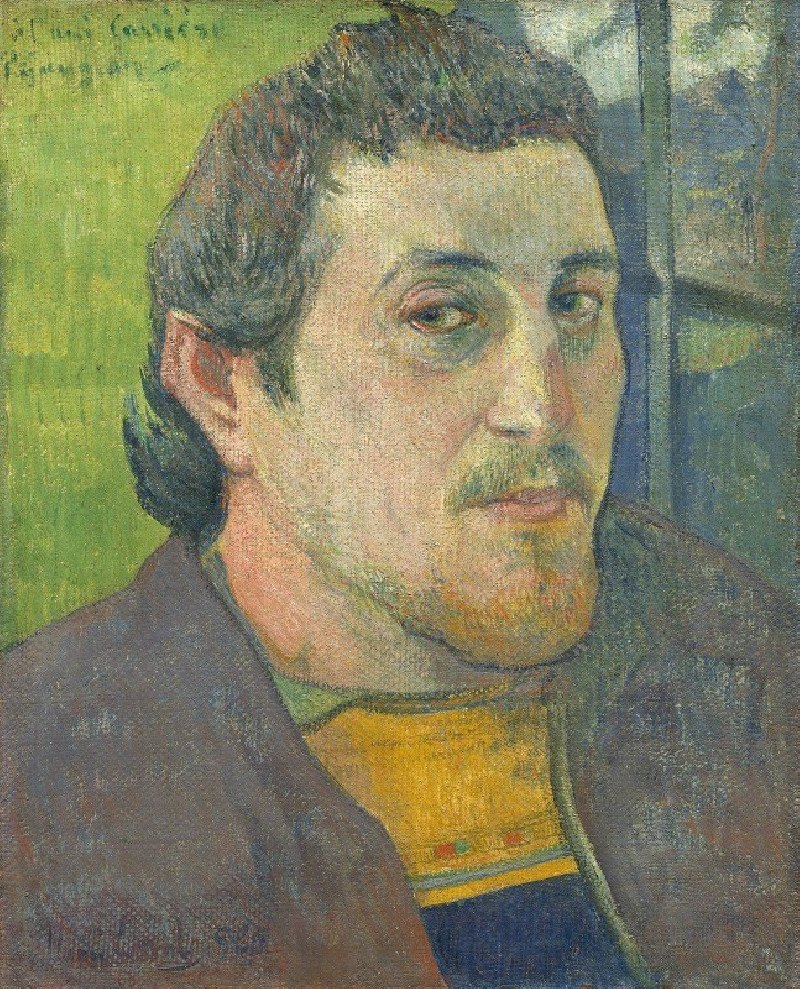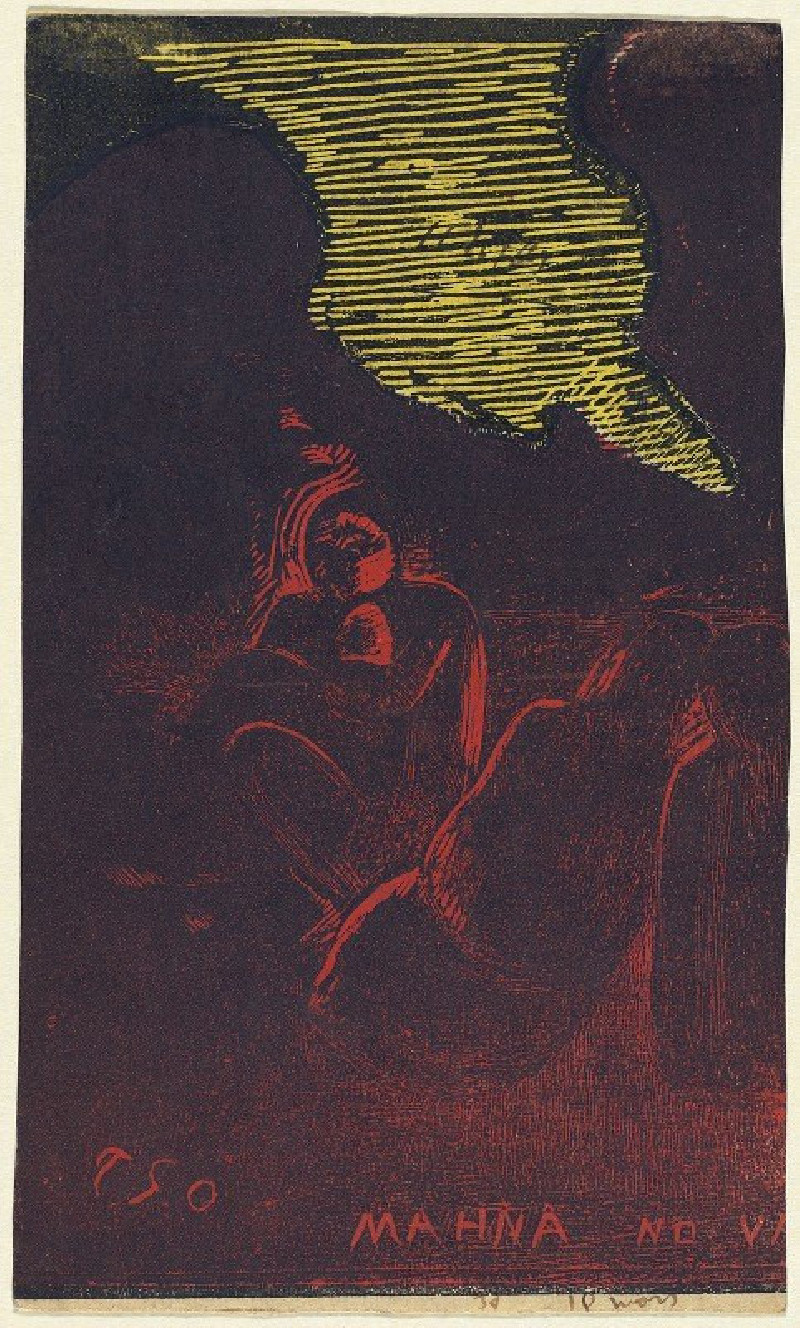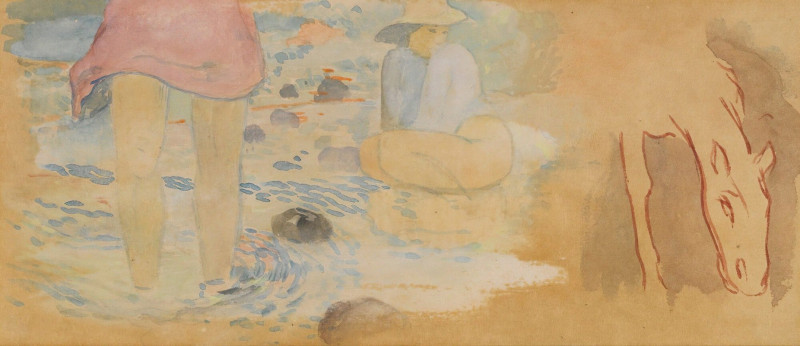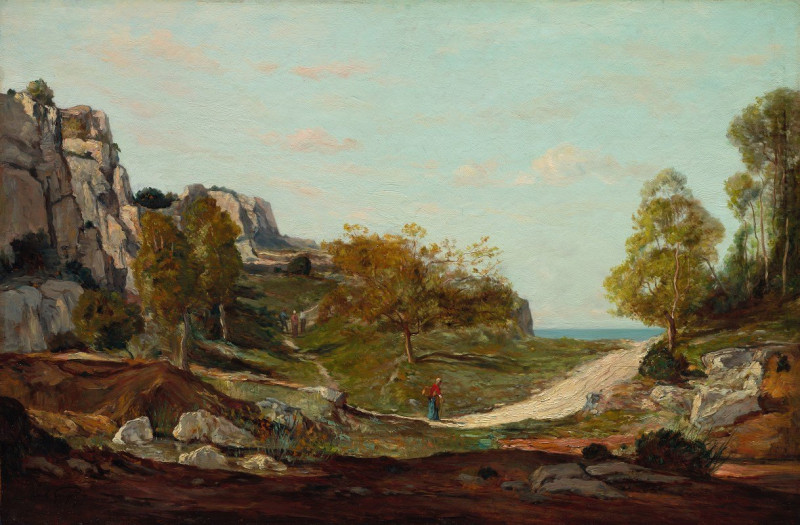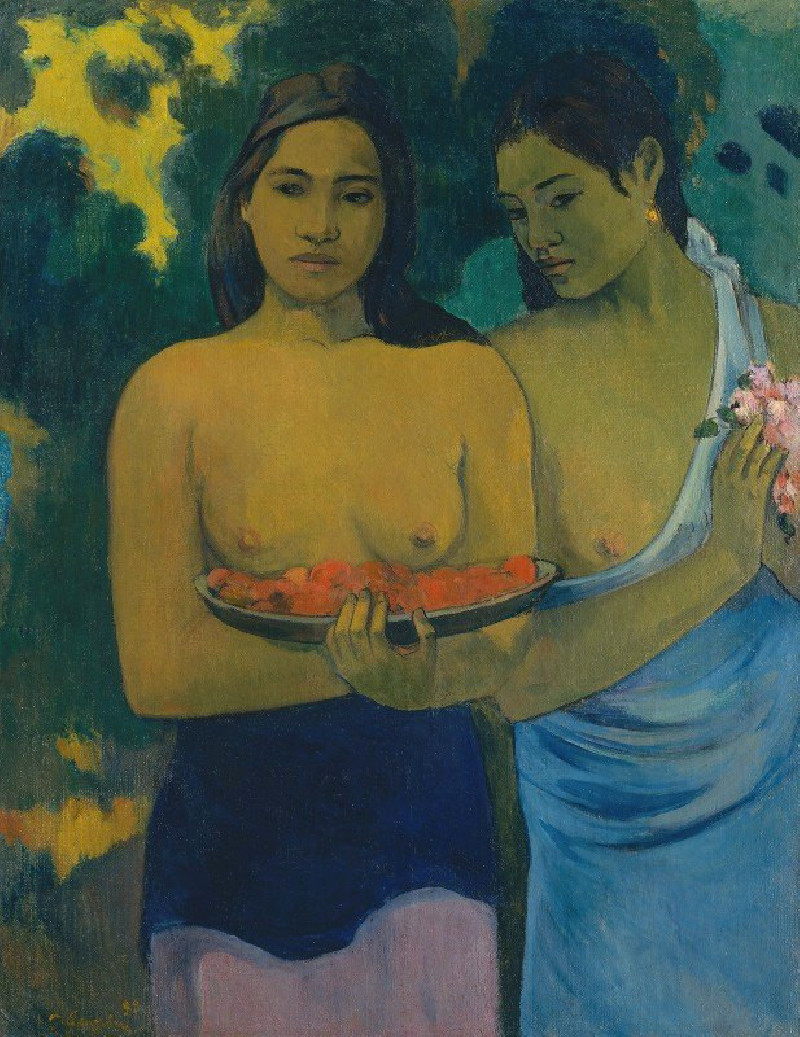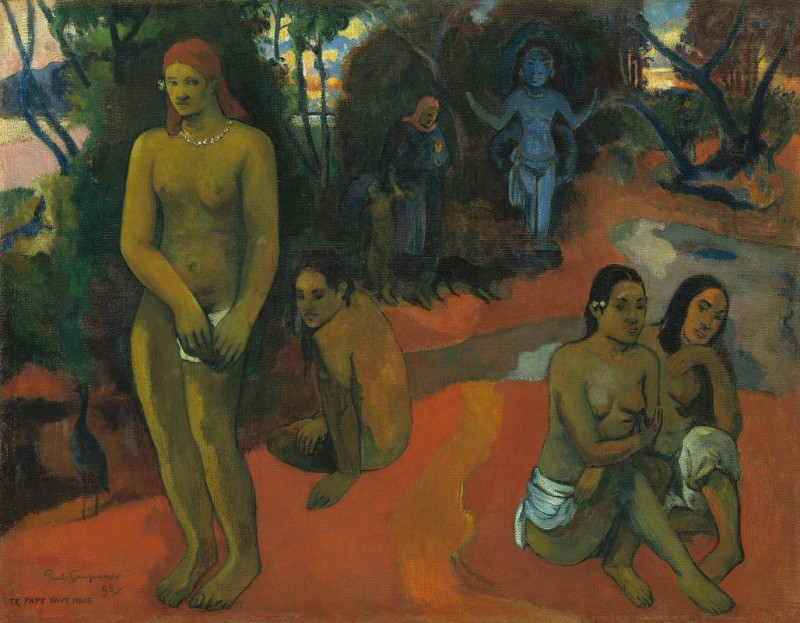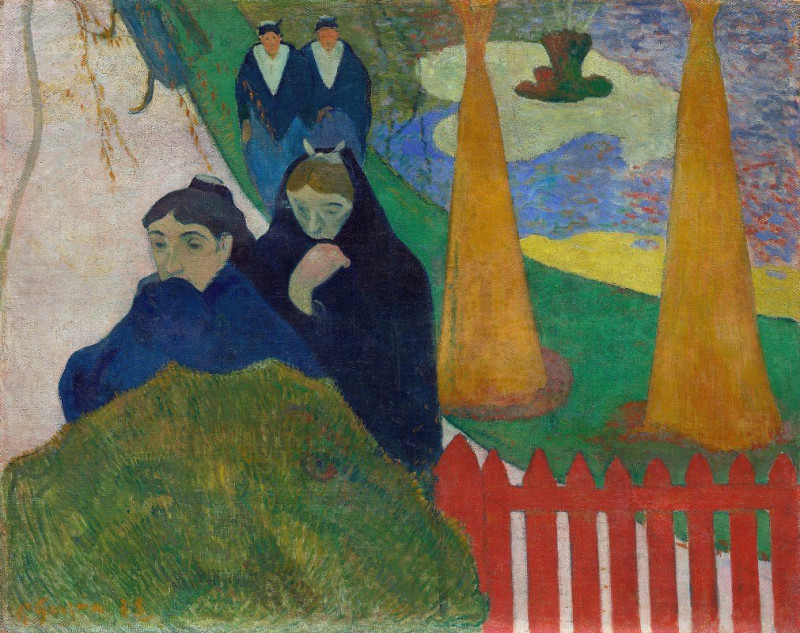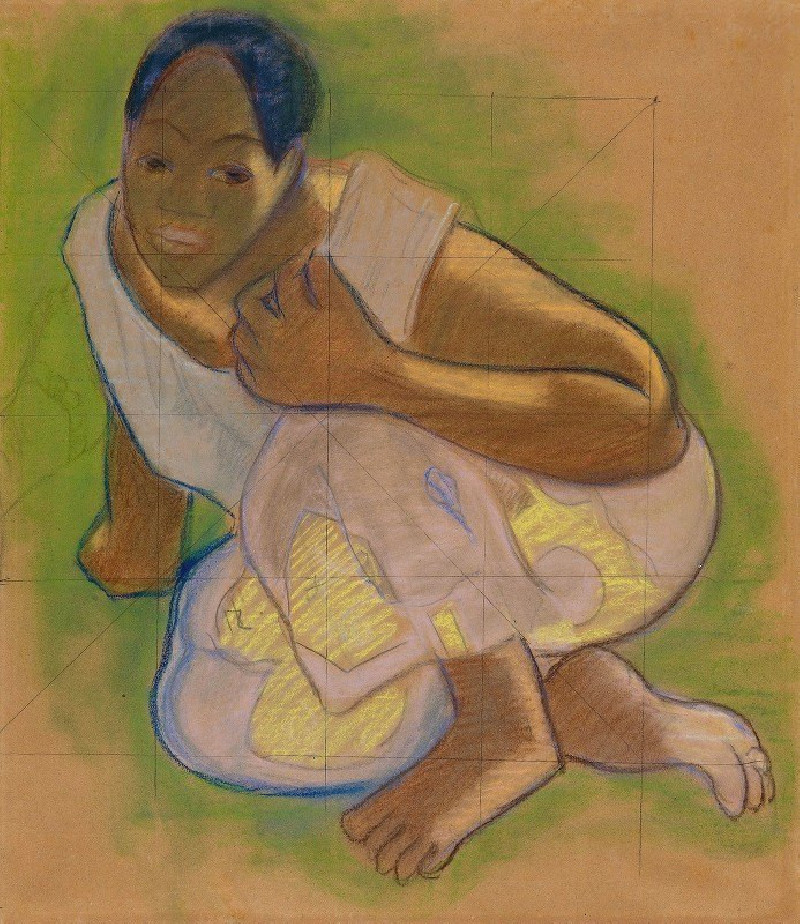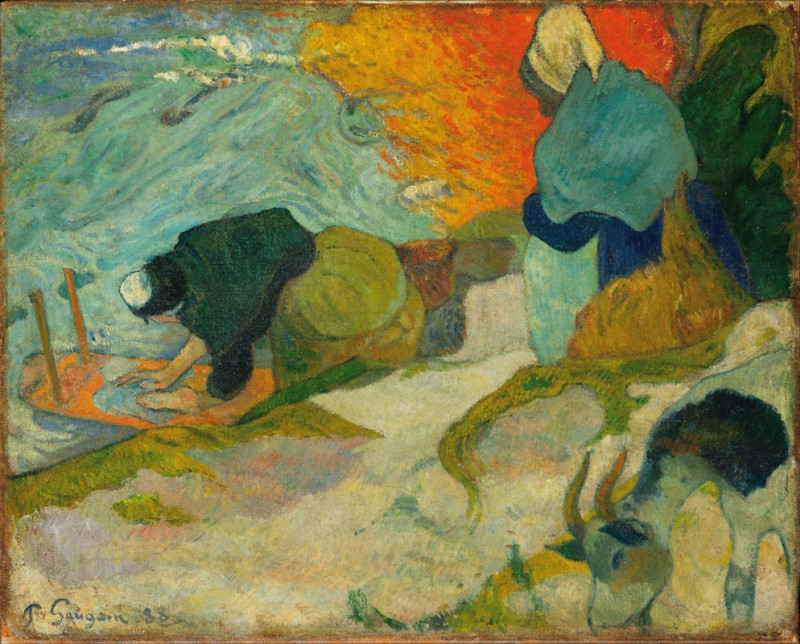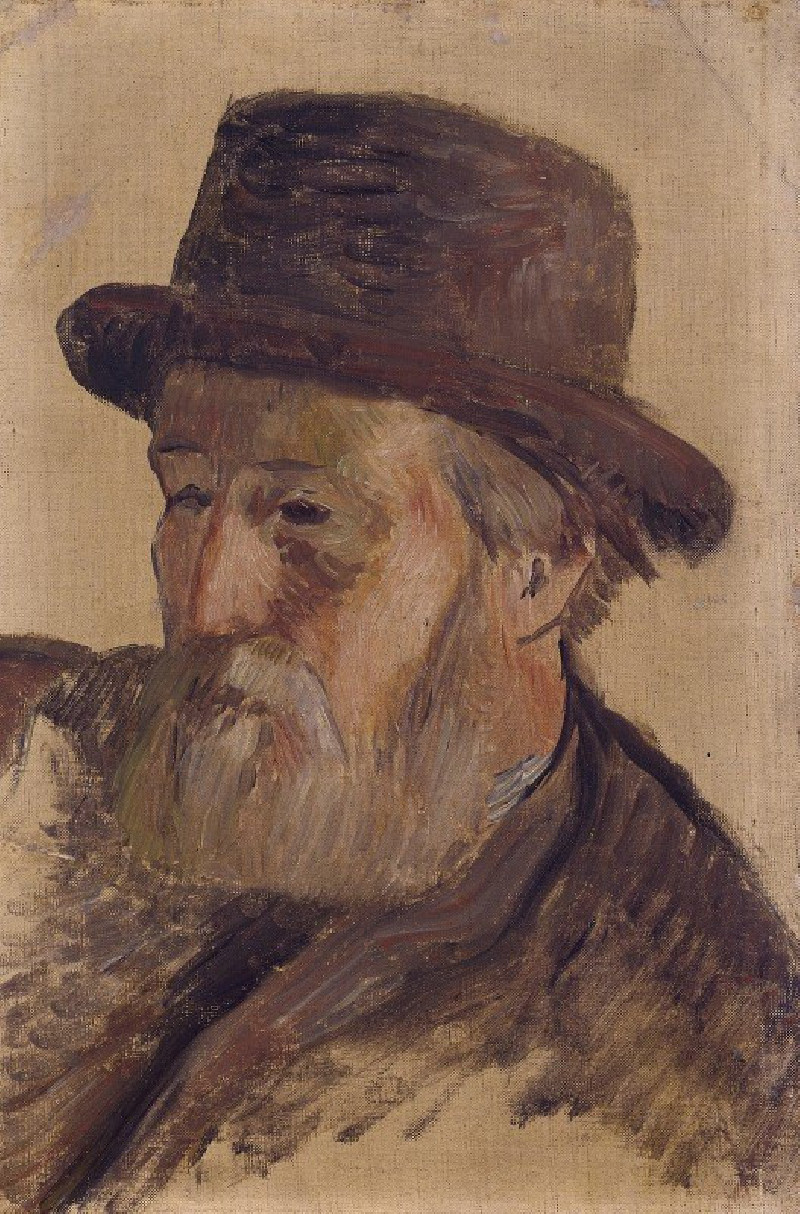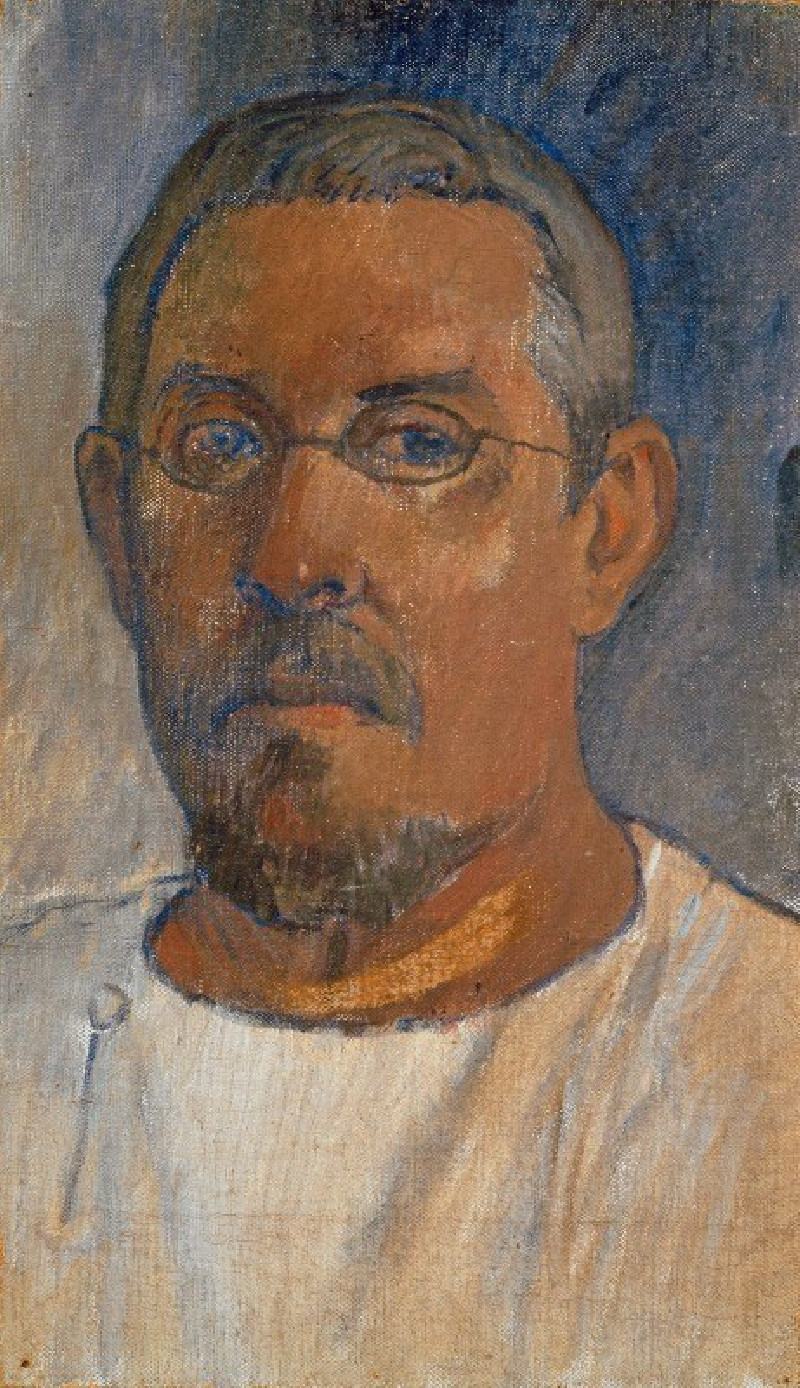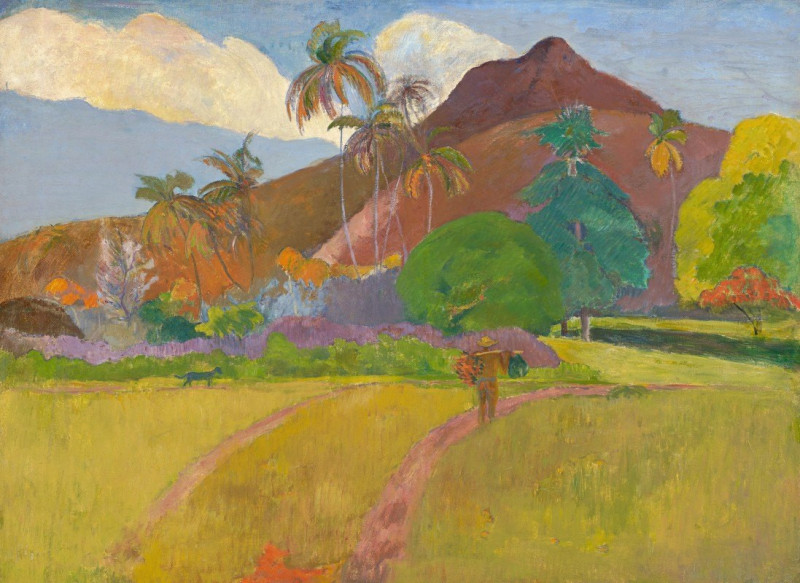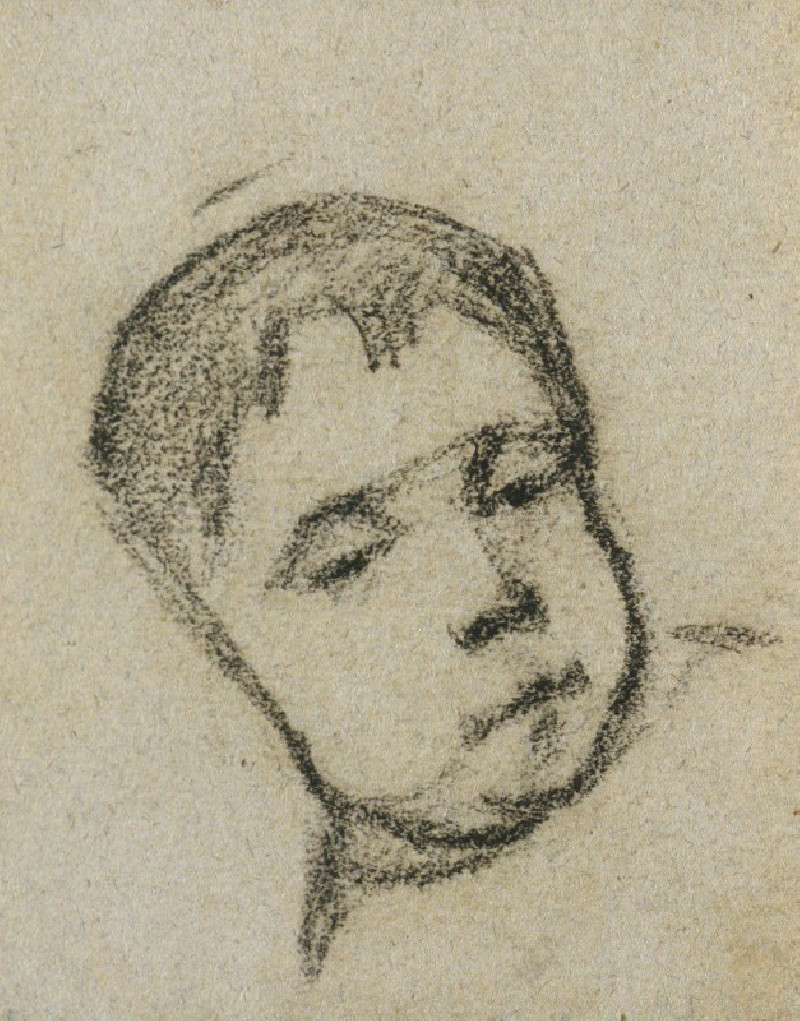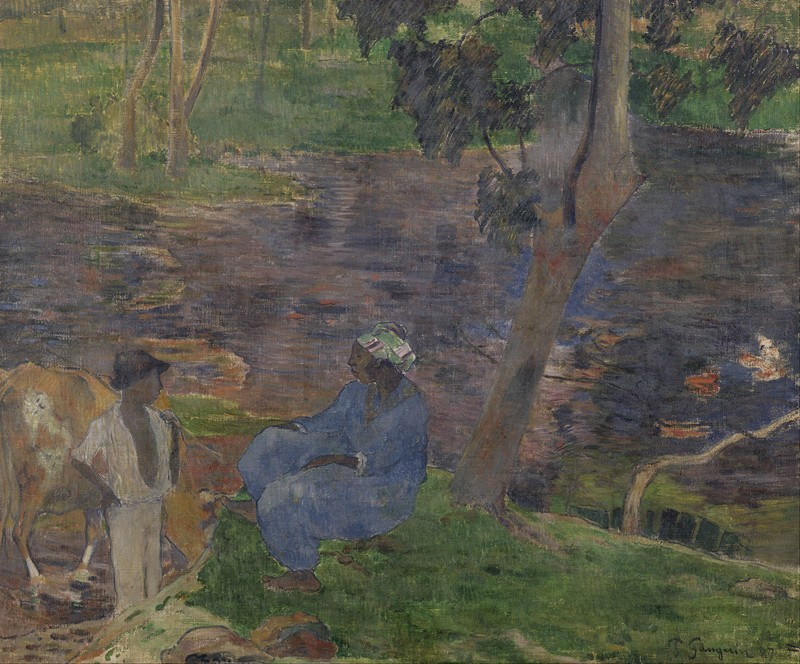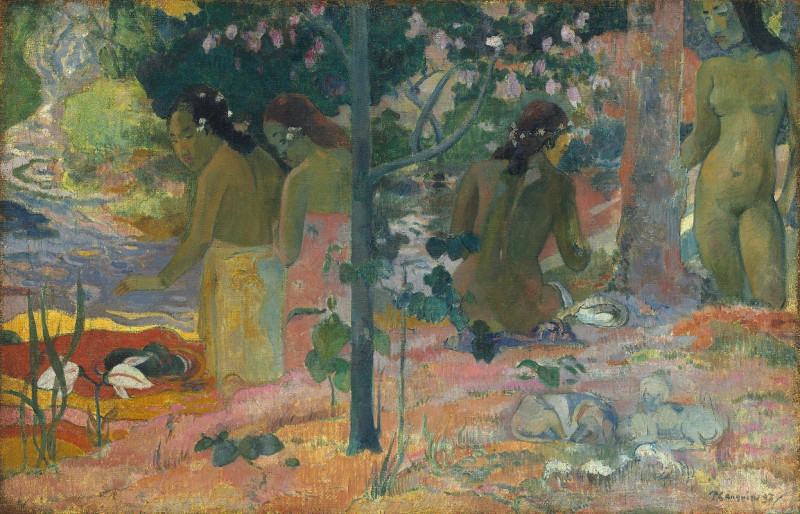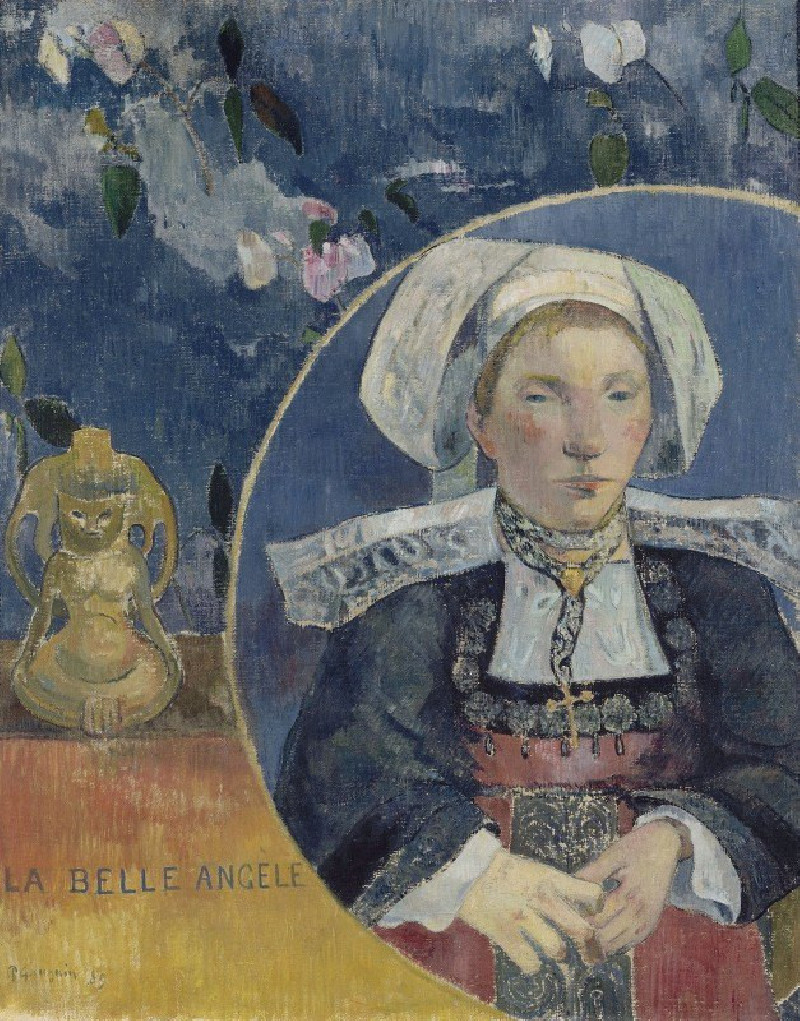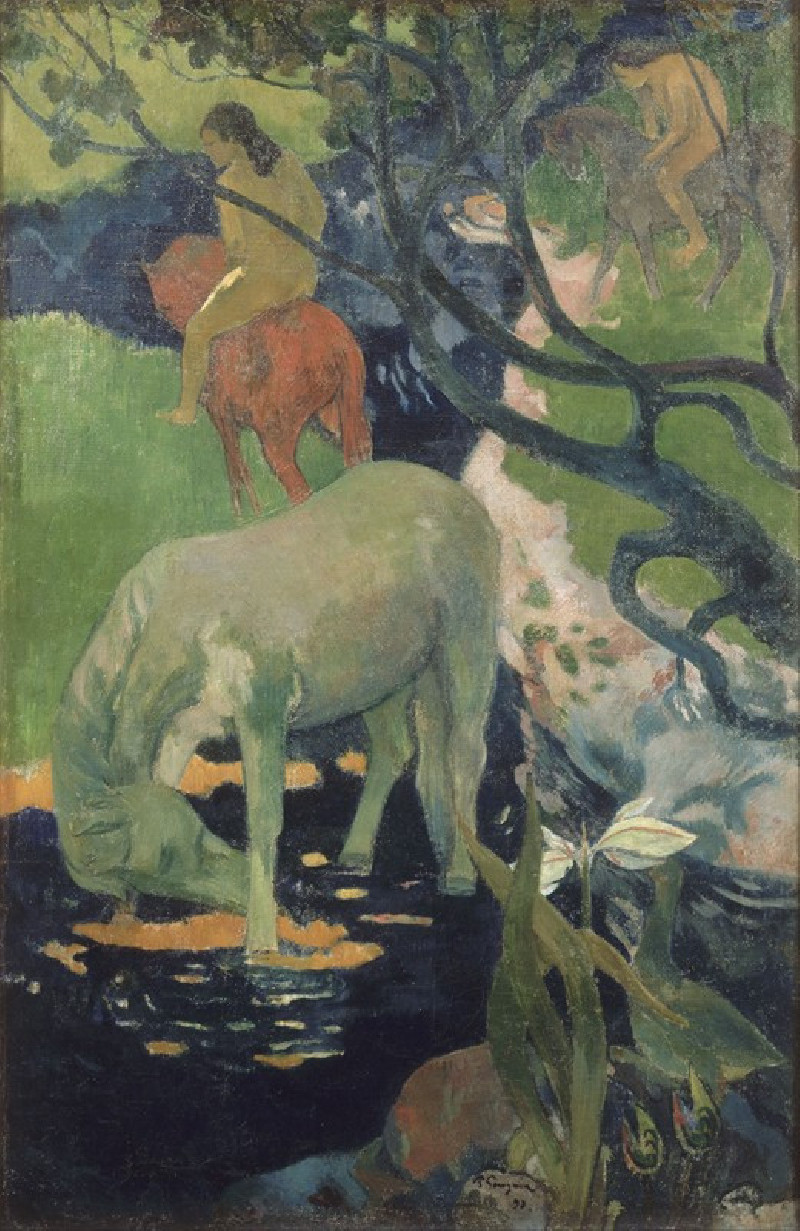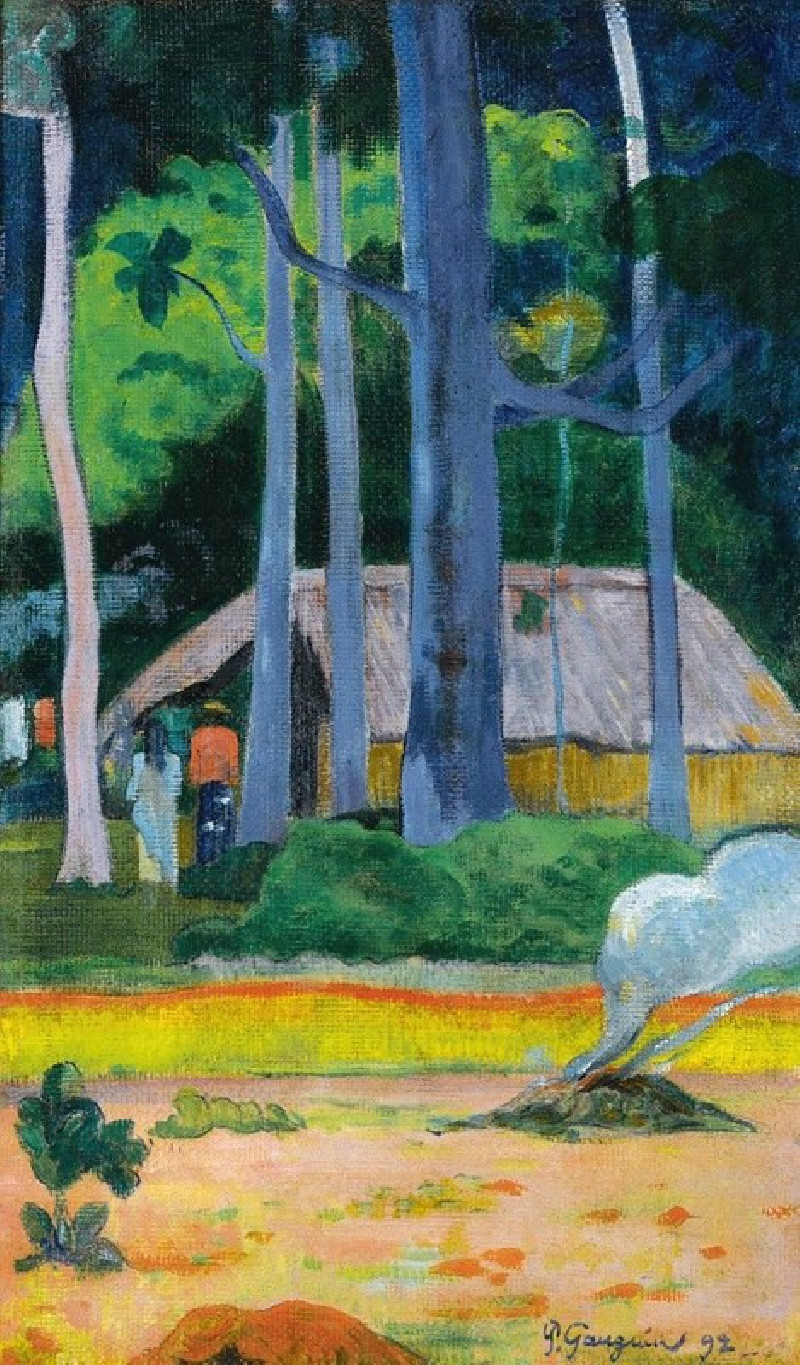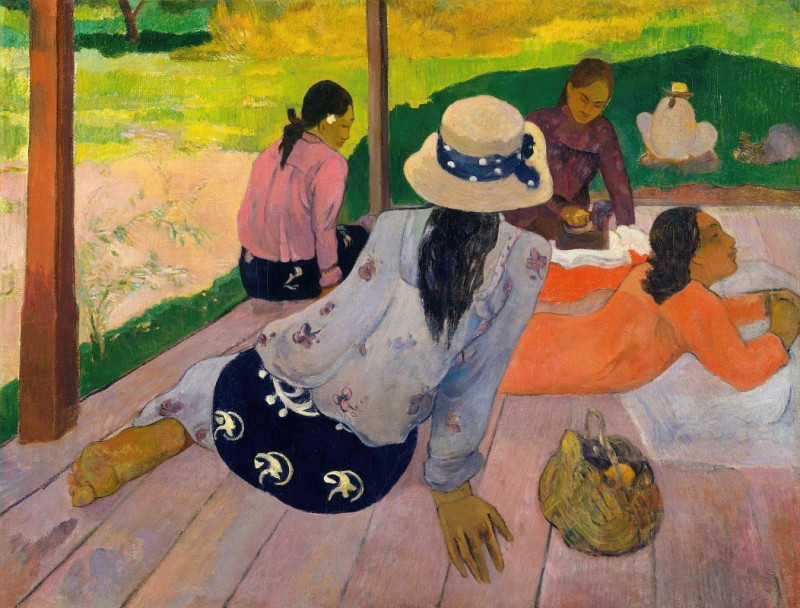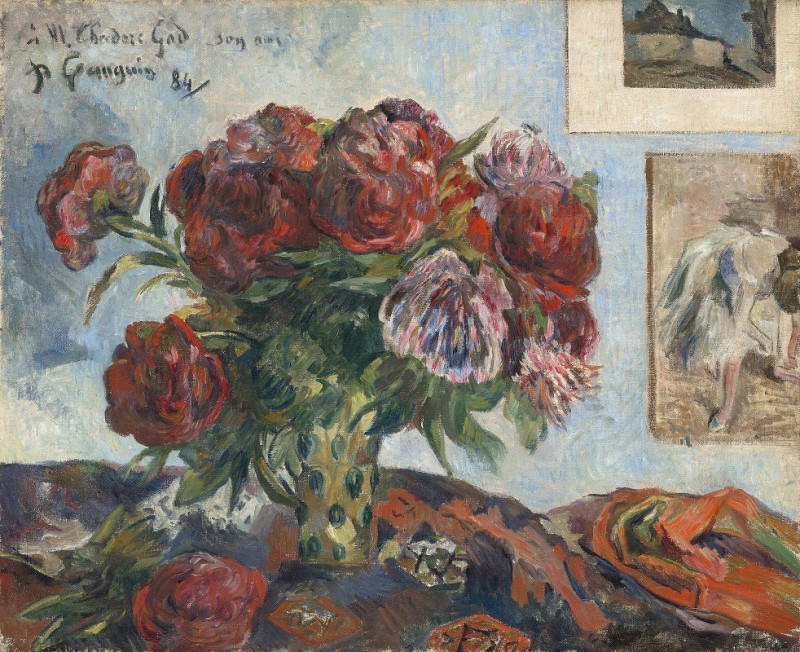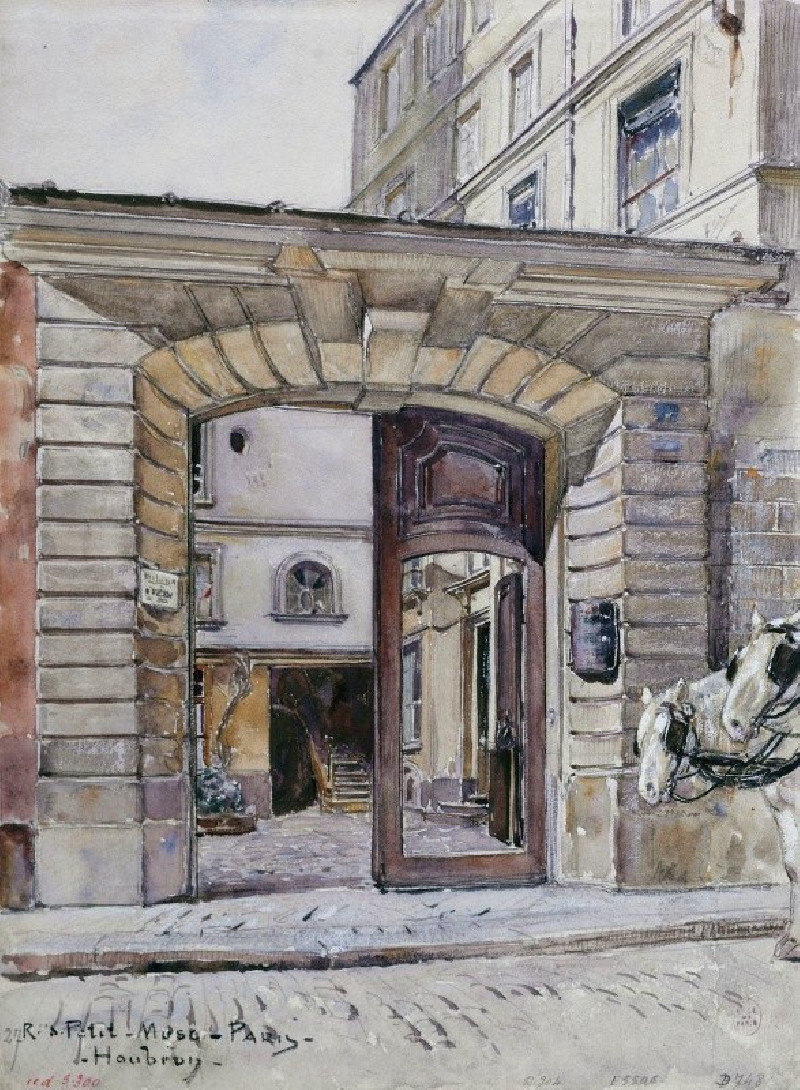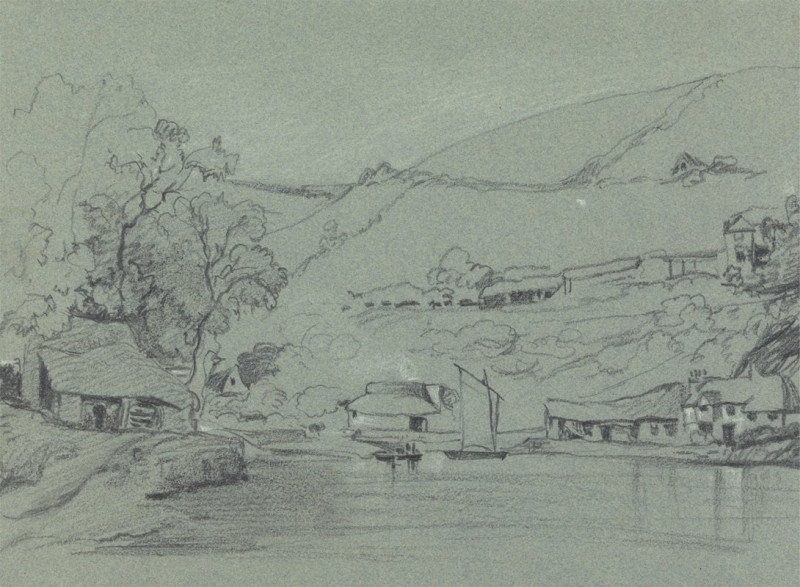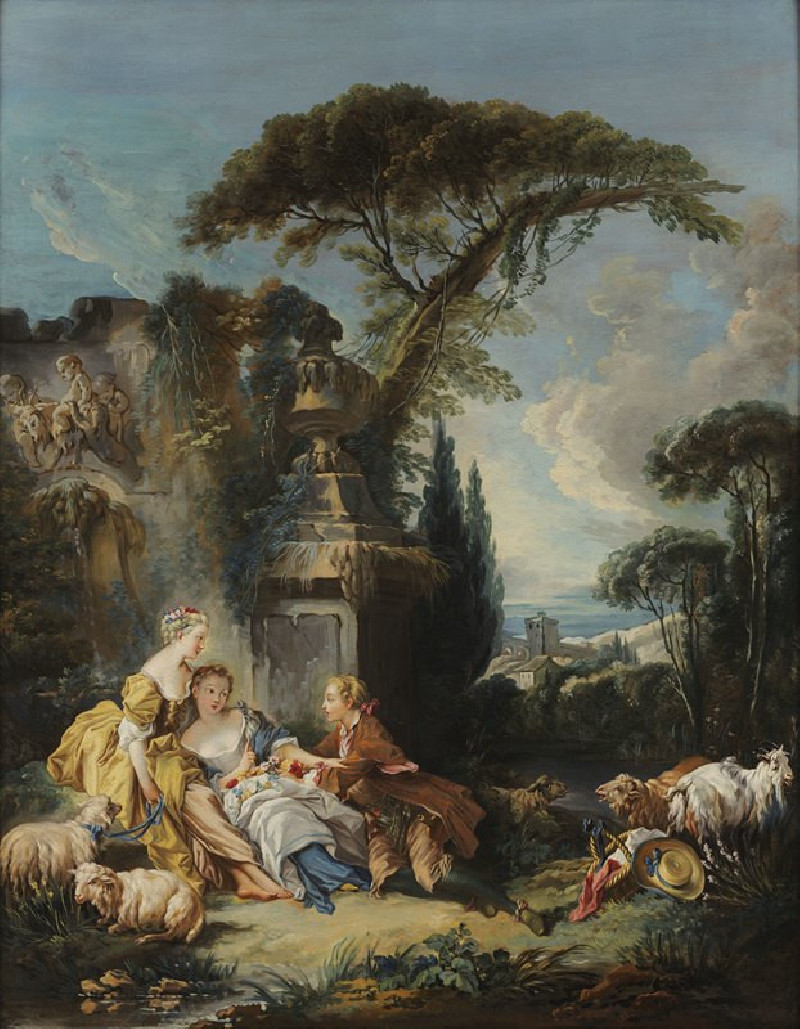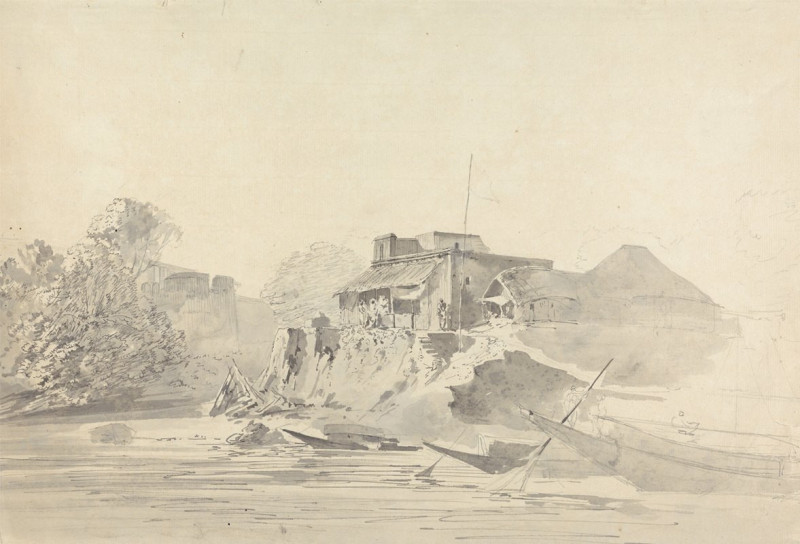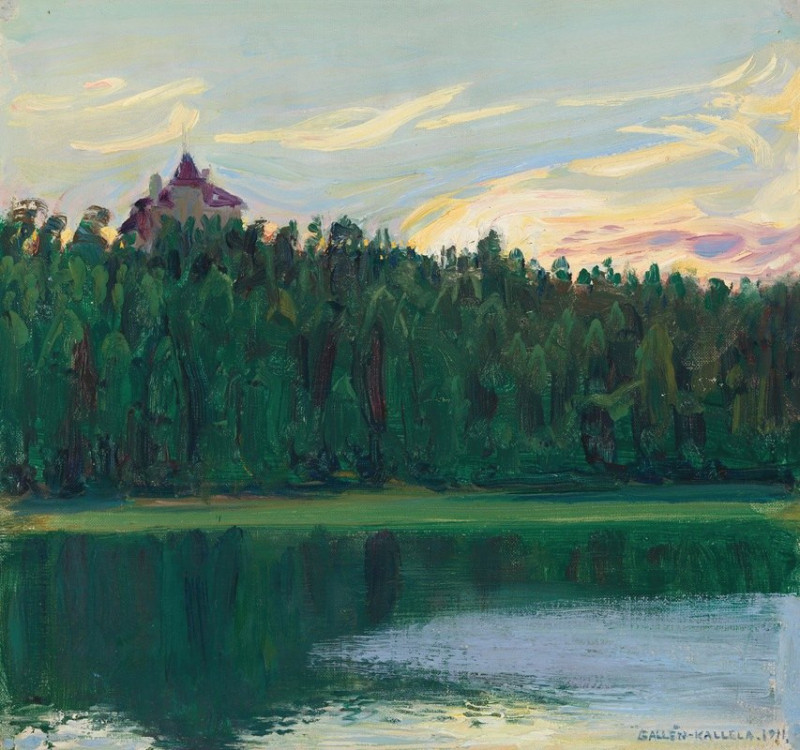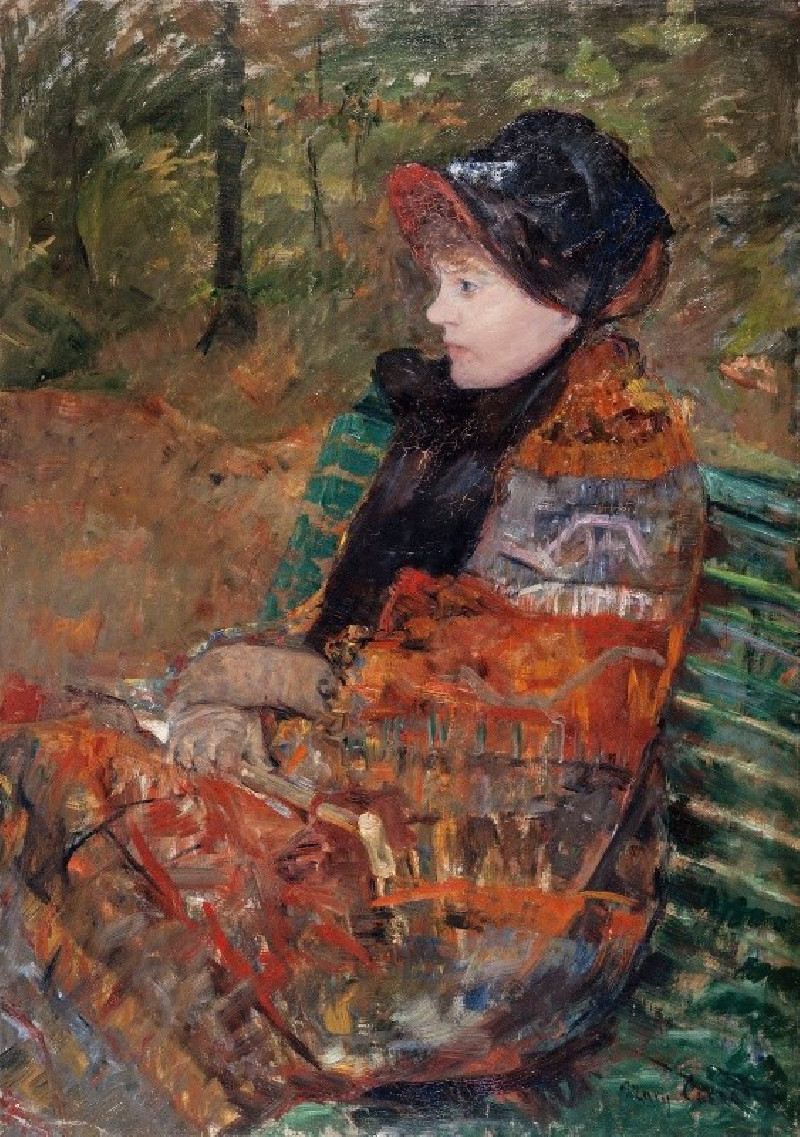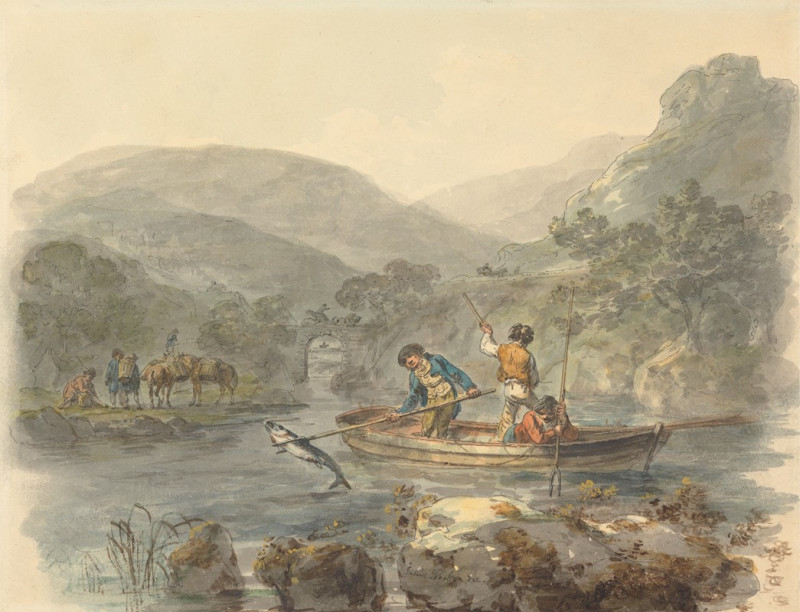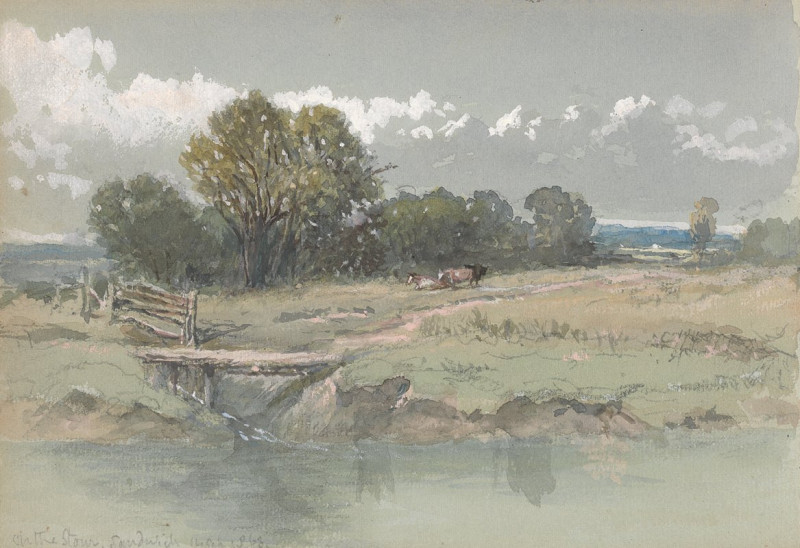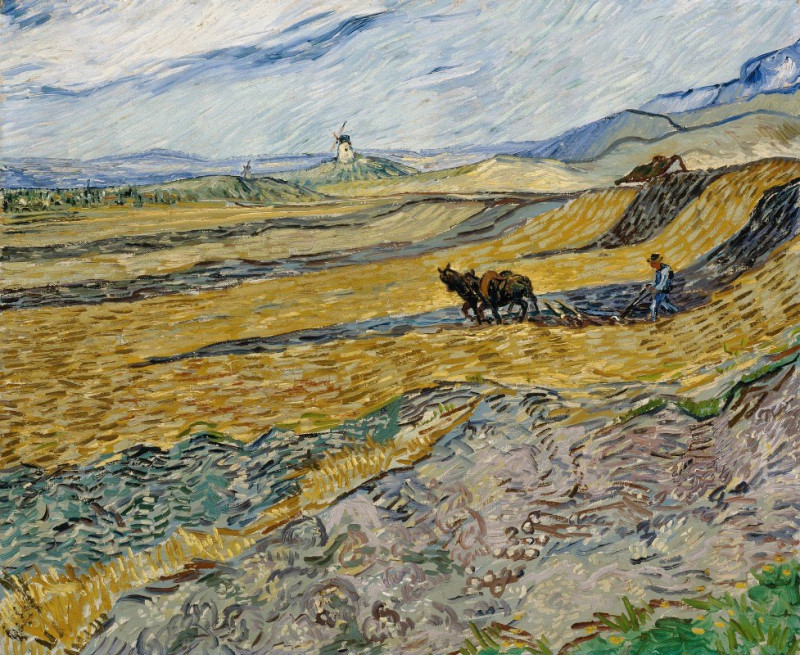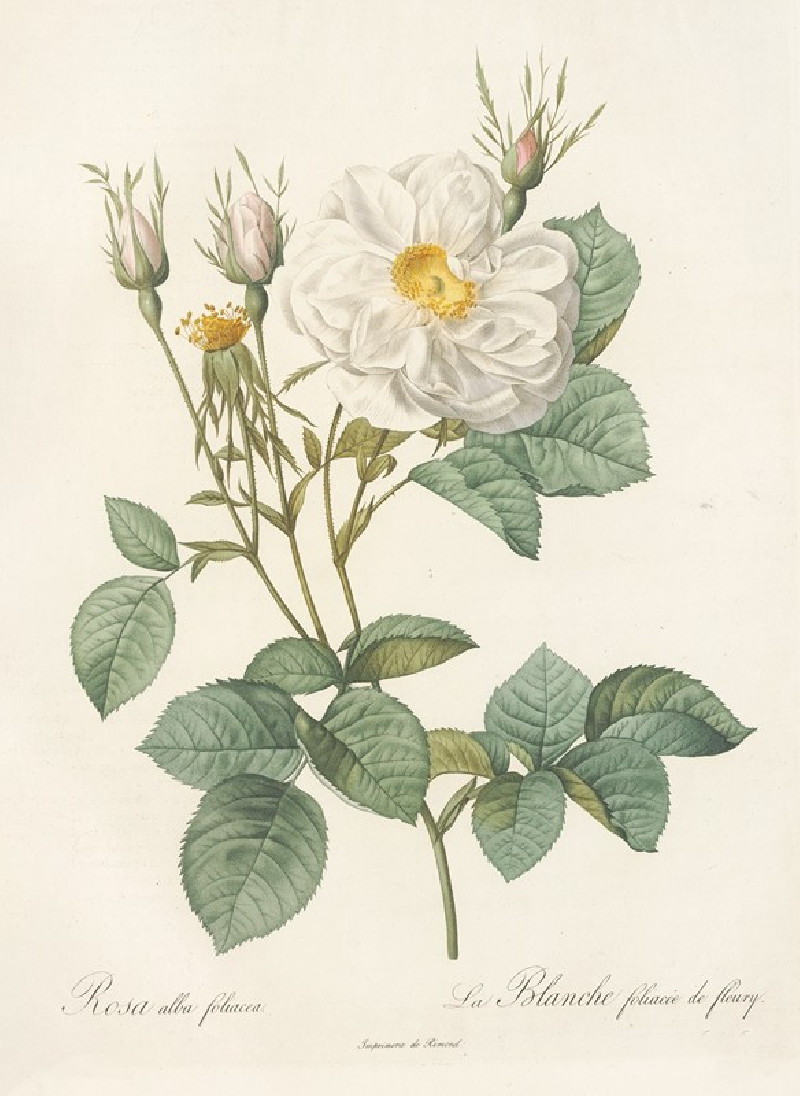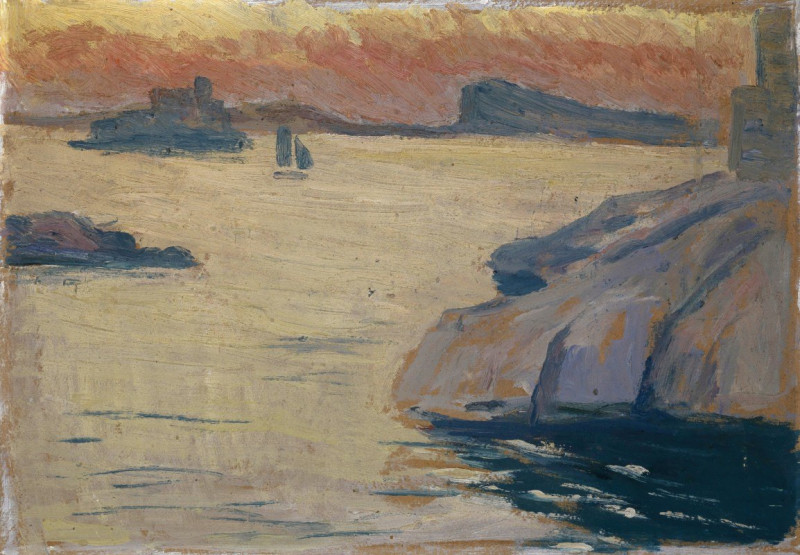Parau na te Varua ino (Words of the Devil) (1892)
Technique: Giclée quality print
Recommended by our customers
More about this artwork
"Parau na te Varua ino (Words of the Devil)" is a captivating and vibrant painting by the French Post-Impressionist artist Paul Gauguin, created during his first stay in Tahiti in 1892. This artwork delves deep into the cultural and spiritual life of the Tahitians, which Gauguin was profoundly influenced by during his time on the island.The painting portrays two Tahitian women against a lush, mystic backdrop that includes a dark, ominous figure and a bird with a vividly red head in the upper right corner. The woman standing at the forefront, enveloped in contemplation and gently clasping her chin, is depicted nude, symbolizing her purity and perhaps her vulnerability. To her right, another woman sits on the ground, dressed in a traditional blue robe, with a somewhat distressed expression that contrasts with the calm demeanor of the standing figure.The vivid colors and abstract forms create an emotionally charged atmosphere that reflects Gauguin’s departure from European painting conventions and his embrace of a more symbolic and primitive depiction of human experience. The use of bold, flat colors and the stylization of figures are characteristic of Gauguin's unique style, which paved the way for modern art movements like Primitivism."Parau na te Varua ino" is not only a celebration of the spiritual and cultural dimensions of Tahitian life but also an introspective piece that invites viewers to reflect on the influence of external and unseen forces on human emotions and destinies.
Delivery
Returns
Eugène Henri Paul Gauguin was a French Post-Impressionist artist. Unappreciated until after his death, Gauguin is now recognized for his experimental use of color and Synthetist style that were distinct from Impressionism. Toward the end of his life, he spent ten years in French Polynesia. The paintings from this time depict people or landscapes from that region.


